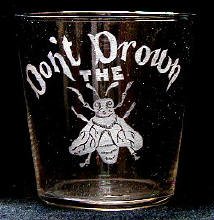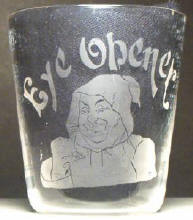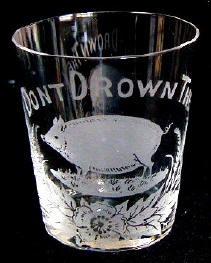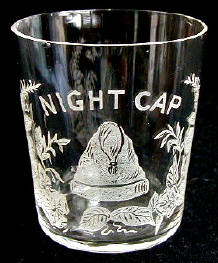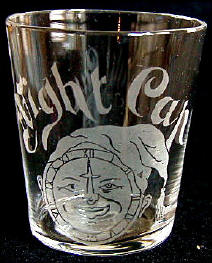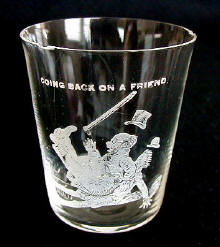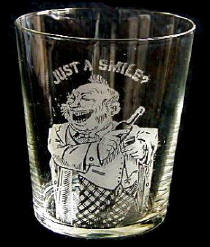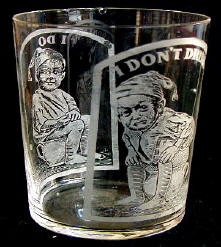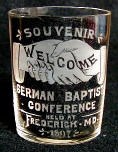 |
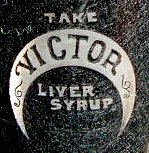 |
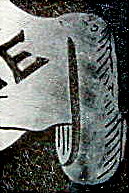 |
|
|
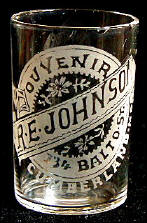 |
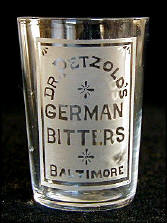 |
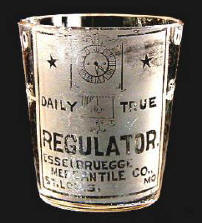 |
Truog was Italian-born, but war forced his family to flee to Switzerland while he was still very young. He was educated in the arts and completed studies at the University of Zurich before emigrating to the US in 1883. He was by now an accomplished artist and secured a position designing etched glass patterns for the Central Glass Works of Wheeling, WV. He later helped found the Seneca Glass Company of Morgantown, WV but it was destroyed in a blaze in 1893 and he moved to Cumberland to establish his etching company.
Not only was Truog a talented artist, he also had a quirky sense of humor that is evident in a series of novelty glasses. These include two “Don’t Drown” glasses which implore the imbiber to keep the contents at a level below that which might imperil an etched hog or a fly. In the same series is an “Eye Opener” that features a cowled monk (photo: Bill Naglik).
Several variations on the hog theme survive. In one, the hog is handsomely portly whereas in another the animal seems grossly inflated to the point where it might rupture! Neither of the latter two glasses are signed, but Truog’s hand in the floral design is so evident that they are almost certainly his.
My personal favorite Truog glasses include the whimsical “Going Back on a Friend”, a glass that has sparked considerable debate as to its meaning. Then there is “It’s a Long Time Between”, featuring a character whose lugubrious face leaves little doubt that the word left hanging is “drinks”. Then there is a deliciously lecherous gent in the “Just a Smile” glass. One can only imagine the consequences of filling this particular glass! Finally, there’s the wonderful “I Do / I Don’t” glass, featuring two panels within which we see a child performing (or not) on a pot.
One really has to wonder who would have purchased these glasses and why, but clearly they were popular at the time because so many have survived the 100 plus years since their manufacture, most of them in pristine condition. Auction prices on these glasses has risen spectacularly in the past two years as awareness of them grows, from a mere $20 each to over $150. If only the stock market performed so well!
| Although the Truog novelty glasses have irresistible charm, they probably represented a sideline for the company, with the bulk of his work involving manufacture of branded beer and whiskey glasses. Very few of these were signed so attribution has been difficult, but first inklings that this might be the case came with the publication of Barbara Edmonson’s book, Old Advertising Spirits Glasses. In the Introductory material, she drew attention to original designs that appear in a scrapbook that was compiled by Truog and that now resides in the library of Alleghany College, Cumberland. They include sketches of the monk “Eye Opener” and “Don’t Drown the Fly” glasses mentioned above, but they also include designs for several branded whiskey glasses. | 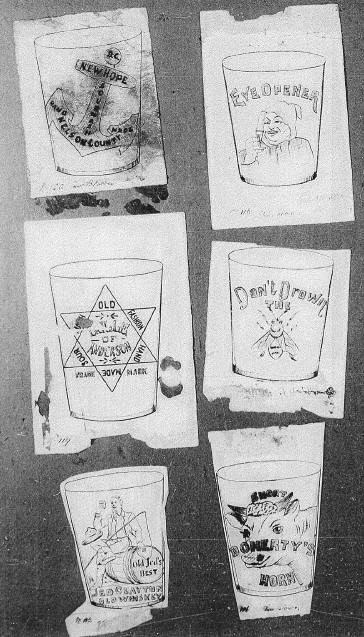 |

